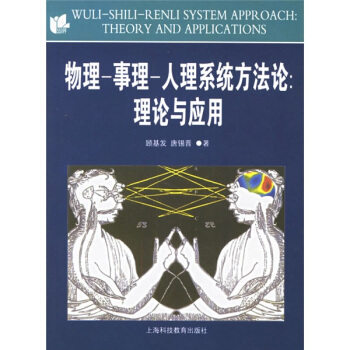

具体描述
编辑推荐
《金融工程和计算》由剑桥大学出版社出版,原书名为:Financial Engineering and Computation: Principles, Mathematics, and Algorithms,是一本非常优秀的有关金融计算的图书。 如今打算在金融领域工作的学生和专家不仅要掌握先进的概念和数学模型,还要学会如何在计算上实现这些模型。《金融工程和计算》内容广泛,不仅介绍了金融工程背后的理论和数学,并把重点放在了计算上,以便和金融工程在今天资本市场的实际运作保持一致。《金融工程和计算》不同于大多数的有关投资、金融工程或者衍生证券方面的书,而是从金融的基本想法开始,逐步建立理论。作者提供了很多定价、风险评估以及项目组合管理的算法和理论。《金融工程和计算》的重点是有关金融产品和衍生证券、期权、期货、远期、利率衍生产品、抵押证券等等的定价问题。每个工具都有简要的介绍,每章都可以独立被引用。《金融工程和计算》的算法均使用Java算法编程实现的,并可以在相关的网站上下载。《金融工程和计算》可供金融MBA、金融学和金融工程方向的学生、计算金融的研究人员以及金融分析师参考使用。《金融工程和计算:原理数学算法》(影印版)是其中一个分册!内容简介
《金融工程和计算:原理数学算法》(影印版)全面讨论了金融工程背后的理论和数学,并强调了在当今资本市场中金融工程实际应用的计算。与大多数有关投资学、金融工程或衍生证券的书不同的是,《金融工程和计算:原理数学算法》(影印版)从金融学的基本观念出发,逐步构建理论。在现代金融学中所需要的高级数学概念以一种可接受的层次来阐释。这样,它就为金融方面的MBA、有志于从事金融业的理工科学生、计算金融的研究工作者、系统分析师和金融工程师在这一主题上提供了全面的基础。构建理论的同时,作者介绍了在定价、风险管理和证券组合管理方面的计算技巧的算法,并且对它们的效率进行了分析。对金融证券和衍生证券的定价是《金融工程和计算:原理数学算法》(影印版)的中心论题。各种各样的金融工具都得到讨论:债券、期权、期货、远期、利率衍生品、有抵押支持的证券、嵌入期权的债券,以及诸如此类的其他工具。为便于参考使用,每种金融工具都以简短而自成体系的一章来论述。
作者简介
吕育道(Yuh—Dauh Lyuu)教授在哈佛大学获得计算机科学专业的博土学位。他过去的职位包括贝尔实验室的技术人员、NEC研究所(普林斯顿)的研究员以及花旗证券(纽约)的助理副总裁。他目前是台湾大学的计算机科学与信息工程学教授和金融学教授。他的前一本著作是《信息散布和并行计算》(Information Dispersal and Parallel Computation)。吕教授在计算机科学和金融两方面都出版过著作,他也持有美国专利,并曾因指导优秀研究生论文多次获奖。内页插图
目录
PrefaceUseful Abbreviations
1 Introduction
1.1 Modern Finance: A Brief History
1.2 Financial Engineering and Computation
1.3 Financial Markets
1.4 Computer Technology
2 Analysis of Algorithms
2.1 Complexity
2.2 Analysis of Algorithms
2.3 Description of Algorithms
2.4 Software Implementation
3 Basic Financial Mathematics
3.1 Time Value of Money
3.2 Annuities
3.3 Amortization
3.4 Yields
3.5 Bonds
4 Bond Price Volatility
4.1 Price Volatility
4.2 Duration
4.3 Convexity
5 Term Structure of Interest Rates
5.1 Introduction
5.2 Spot Rates
5.3 Extracting Spot Rates from Yield Curves
5.4 Static Spread
5.5 Spot Rate Curve and Yield Curve
5.6 Forward Rates
5.7 Term Structure Theories
5.8 Duration and Immunization Revisited
6 Fundamental Statistical Concepts
6.1 Basics
6.2 Regression
6.3 Correlation
6.4 Parameter Estimation
7 Option Basics
7.1 Introduction
7.2 Basics
7.3 Exchange-Traded Options
7.4 Basic Option Strategies
8 Arbitrage in Option Pricing
8.1 The Arbitrage Argument
8.2 Relative Option Prices
8.3 Put-Call Parity and Its Consequences
8.4 Early Exercise of American Options
8.5 Convexity of Option Prices
8.6 The Option Portfolio Property
9 Option Pricing Models
9.1 Introduction
9.2 The Binomial Option Pricing Model
9.3 The Black-Scholes Formula
9.4 Using the Black-Scholes Formula
9.5 American Puts on a Non-Dividend-Paying Stock
9.6 Options on a Stock that Pays Dividends
9.7 Traversing the Tree Diagonally
10 Sensitivity Analysis of Options
10.1 Sensitivity Measures ("The Greeks")
10.2 Numerical Techniques
11 Extensions of Options Theory
11.1 Corporate Securities
11.2 Barrier Options
11.3 Interest Rate Caps and Floors
11.4 Stock Index Options
11.5 Foreign Exchange Options
11.6 Compound Options
11.7 Path-Dependent Derivatives
12 Forwards, Futures, Futures Options, Swaps
12.1 Introduction
12.2 Forward Contracts
12.3 Futures Contracts
12.4 Futures Options and Forward Options
12.5 Swaps
13 Stochastic Processes and Brownian Motion
13.1 Stochastic Processes
13.2 Martingales ("Fair Games")
13.3 Brownian Motion
13,4 Brownian Bridge
14 Continuous-Time Financial Mathematics
14.1 Stochastic Integrals
14.2 Ito Processes
14.3 Applications
14.4 Financial Applications
15 Continuous-Time Derivatives Pricing
15.1 Partial Differential Equations
15.2 The Black-Schotes Differential Equation
15.3 Applications
15.4 General Derivatives Pricing
15.5 Stochastic Volatility
16 Hedging
16.1 Introduction
16.2 Hedging and Futures
16.3 Hedging and Options
17 Trees
17.1 Pricing Barrier Options with Combinatorial Methods
17.2 Trinomial Tree Algorithms
17.3 Pricing Multivariate Contingent Claims
18 Numerical Methods
18.1 Finite-Difference Methods
18.2 Monte Carlo Simulation
18.3 Quasi-Monte Carlo Methods
19 Matrix Computation
19.1 Fundamental Definitions and Results
19.2 Least-Squares Problems
19.3 Curve Fitting with Splines
20 Time Series Analysis
20.1 Introduction
20.2 Conditional Variance Models for Price Volatility
21 Interest Rate Derivative Securities
21.1 Interest Rate Futures and Forwards
21.2 Fixed-Income Options and Interest Rate Options
21.3 Options on Interest Rate Futures
21.4 Interest Rate Swaps
22 Term Structure Fitting
22.1 Introduction
22.2 Linear Interpolation
22.3 Ordinary Least Squares
22.4 Splines
22.5 The Nelson-Siegel Scheme
23 Introduction to Term Structure Modeling
23.1 Introduction
23.2 The Binomial Interest Rate Tree
23.3 Applications in Pricing and Hedging
23.4 Volatility Term Structures
24 Foundations of Term Structure Modeling
24.1 Terminology
24.2 Basic Relations
24.3 Risk-Neutral Pricing
24.4 The Term Structure Equation
24.5 Forward-Rate Process
24.6 The Binomial Model with Applications
24.7 Black-Scholes Models
25 Equilibrium Term Structure Models
25.1 The Vasicek Model
25.2 The Cox-Ingersoll-Ross Model
25.3 Miscellaneous Models
25.4 Model Calibration
25.5 One-Factor Short Rate Models
26 No-Arbitrage Term Structure Models
26.1 Introduction
26.2 The Ho-Lee Model
26.3 The Black-Derman-Toy Model
26.4 The Models According to Hull and White
26.5 The Heath-Jarrow-Morton Model
26.6 The Ritchken-Sankarasubramanian Model
27 Fixed-Income Securities
27.1 Introduction
27.2 Treasury, Agency, and Municipal Bonds
27.3 Corporate Bonds
27.4 Valuation Methodologies
27.5 Key Rate Durations
28 Introduction to Mortgage-Backed Securities
28.1 Introduction
28.2 Mortgage Banking
28.3 Agencies and Securitization
28.4 Mortgage-Backed Securities
28.5 Federal Agency Mortgage-Backed Securities Programs
28.6 Prepayments
29 Analysis of Mortgage-Backed Securities
29.1 Cash Flow Analysis
29.2 Collateral Prepayment Modeling
29.3 Duration and Convexity
29.4 Valuation Methodologies
30 Collateralized Mortgage Obligations
30.1 Introduction
30.2 Floating-Rate Tranches
30.3 PAC Bonds
30.4 TAC Bonds
30.5 CMO Strips
30.6 Residuals
31 Modern Portfolio Theory
31.1 Mean-Variance Analysis of Risk and Return
31.2 The Capital Asset Pricing Model
31.3 Factor Models
31.4 Value at Risk
32 Software
32.1 Web Programming
32.2 Use of The Capitals Software
32.3 Further Topics
33 Answers to Selected Exercises
Bibliography
Glossary of Useful Notations
Index
用户评价
说实话,拿到《金融工程和计算:原理数学算法(影印版)》这本书的时候,我最先被它的厚重感所吸引。我之前对金融工程的了解大多停留在一些科普性质的文章里,知道它涉及到很多数学模型和计算方法,但具体是如何运作的,却是一知半解。这本书的书名直接点明了“原理”和“数学算法”这两个关键词,这正是我一直想深入了解的部分。我希望它能从最基础的数学概念讲起,循序渐进地带领我理解金融工程的核心理论,比如如何对金融资产进行定价,如何进行风险度量和管理,以及如何构建复杂的金融产品。我尤其感兴趣的是书中关于“算法”的部分,这是否意味着它会介绍一些常用的数值计算方法,或者甚至是一些量化交易策略的底层逻辑?对于我这样想要在金融领域有所建树的人来说,这本教材式的内容无疑是宝贵的财富,它应该能为我打下坚实的理论基础。
评分这本书的封面和名字就透着一股浓浓的学术气息,还没翻开,我就对里面可能充斥的复杂公式和晦涩理论感到一丝敬畏。我一直对金融领域抱有浓厚的兴趣,但对于那些“高大上”的金融工程概念,总觉得隔着一层纱,难以窥其全貌。这本书的副标题“原理数学算法”更是直击要害,点出了金融工程的核心——数学的严谨与计算的精准。我期待它能像一位经验丰富的向导,带领我穿越金融世界的迷宫,揭开那些隐藏在数字背后的秘密。我尤其好奇,它是否会讲解一些当下热门的金融衍生品定价模型,比如布莱克-斯科尔斯模型,以及它们是如何在实际中应用的。另外,书中提到的“计算”部分,我猜测可能涉及到编程语言和数值方法,这对我这个对技术应用感兴趣的读者来说,是相当具有吸引力的。我希望这本书的案例分析能足够贴近实际,让理论不再是空中楼阁,而是能真正指导实践的工具。
评分这本书的装帧设计,虽然是影印版,却给我一种经典学术著作的质感。我之前在学校里学习过一些基础的金融学课程,对金融衍生品和风险管理的概念有所了解,但总觉得停留在表面,缺乏深入的理解。这本书的书名——《金融工程和计算:原理数学算法》,恰好点出了我最想攻克的难点。我期待它能够系统地讲解金融工程领域的关键数学原理,包括但不限于概率论、统计学、微积分等在金融建模中的应用。同时,“计算”这个词也让我对书中的内容充满期待,我猜想它可能会涉及一些数值分析的方法,甚至是一些编程语言在金融计算中的实践。我希望这本书能为我提供一个扎实的理论框架,让我能够理解那些复杂的金融模型是如何被构建和应用的,并且能够自己动手去实现一些基本的金融计算。
评分收到这本《金融工程和计算:原理数学算法(影印版)》,我的第一反应是它看起来就充满深度。我一直以来都对金融市场的运作方式感到好奇,特别是那些看似高深莫测的金融工程工具,比如期权、期货以及各种复杂的对冲策略。我一直认为,理解这些工具背后的数学原理是关键。这本书的名字直接点明了它的核心——数学和算法,这让我对它寄予厚望。我希望它能清晰地解释那些复杂的金融模型是如何构建的,以及它们在现实世界中是如何被用来管理风险、优化投资组合的。特别是在当前金融市场日益复杂和全球化的背景下,掌握这些工具的原理变得尤为重要。我期待书中能够提供一些实际的案例,让我能够更好地理解抽象的理论是如何转化为具体的金融操作的。这本书的影印版形式也让我感受到一种原汁原味的学习体验,或许能接触到一些经典的研究方法和思路。
评分我是一个对金融市场有强烈好奇心,但又常常被其背后的复杂性所困扰的普通投资者。当我看到《金融工程和计算:原理数学算法(影印版)》这本书的时候,我立刻意识到,这可能是我解开金融世界面纱的一把钥匙。书名中的“原理”二字,让我觉得它不仅仅是介绍一些金融产品的操作,而是会深入挖掘其背后的逻辑和设计思想。“数学算法”更是点出了其核心的工具和方法,我一直相信,理解了数学,才能真正理解金融的本质。我期待这本书能够用清晰易懂的方式,讲解那些让普通人望而却步的金融工程概念,比如如何通过数学模型来评估金融风险,如何设计复杂的金融衍生品,以及如何利用计算能力来优化投资决策。我希望它能帮助我摆脱“知其然不知其所以然”的状态,真正掌握金融工程的精髓。
评分go?o?o?o?o?o?o?o?o?o?o?d
评分不错,适合有一定基础的人看看
评分不错,适合有一定基础的人看看
评分不错
评分不错
评分不错
评分不错
评分不错
评分最重要的是算法均使用Java算法编程实现的,可以方便改写成c或者matlab。
相关图书
本站所有内容均为互联网搜索引擎提供的公开搜索信息,本站不存储任何数据与内容,任何内容与数据均与本站无关,如有需要请联系相关搜索引擎包括但不限于百度,google,bing,sogou 等
© 2025 book.idnshop.cc All Rights Reserved. 静思书屋 版权所有








![道路生态学:科学与解决方案 [Road Ecology Science and Solutions] pdf epub mobi 电子书 下载](https://pic.tinynews.org/10125507/b69f56a4-cf8f-4d14-b35c-3af0bcccc6dc.jpg)
![环境监测基础 [Introduction to Environmental Analysis] pdf epub mobi 电子书 下载](https://pic.tinynews.org/10145445/d43de965-83fd-40b7-9f16-89836988541d.jpg)
![国外名校名著·聚合物与光:基础和应用技术 [Polymers and Light:Fundamentals and Technical Applications] pdf epub mobi 电子书 下载](https://pic.tinynews.org/10145551/5521f8a9-8134-4548-98a3-6a46ee1b1eaf.jpg)









